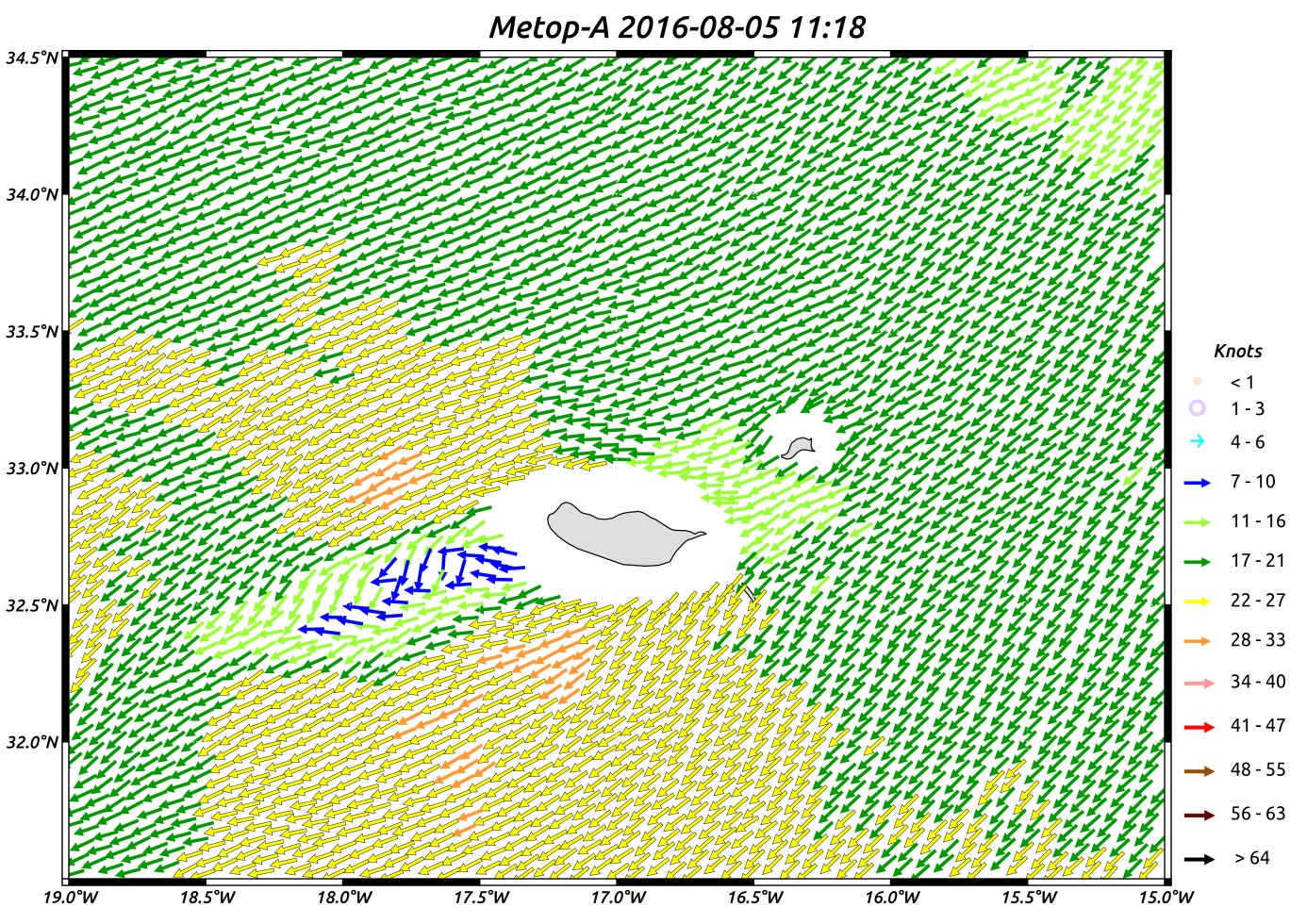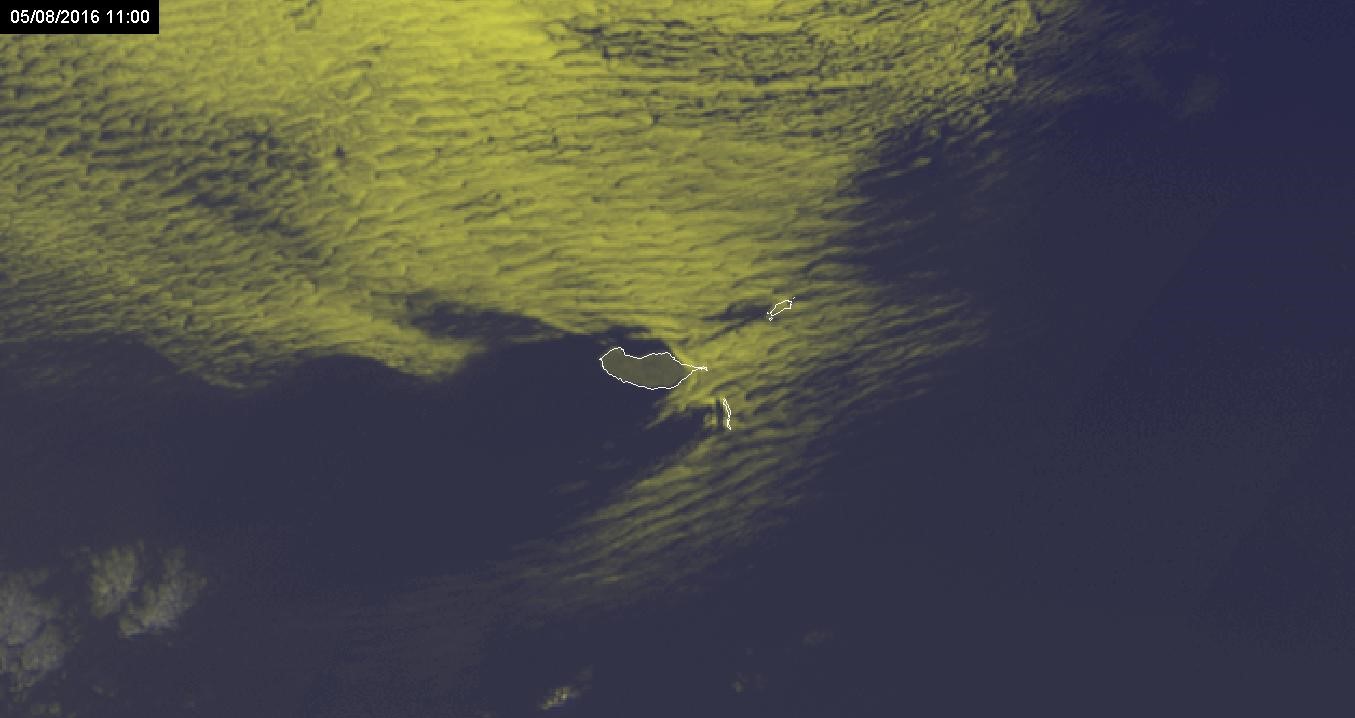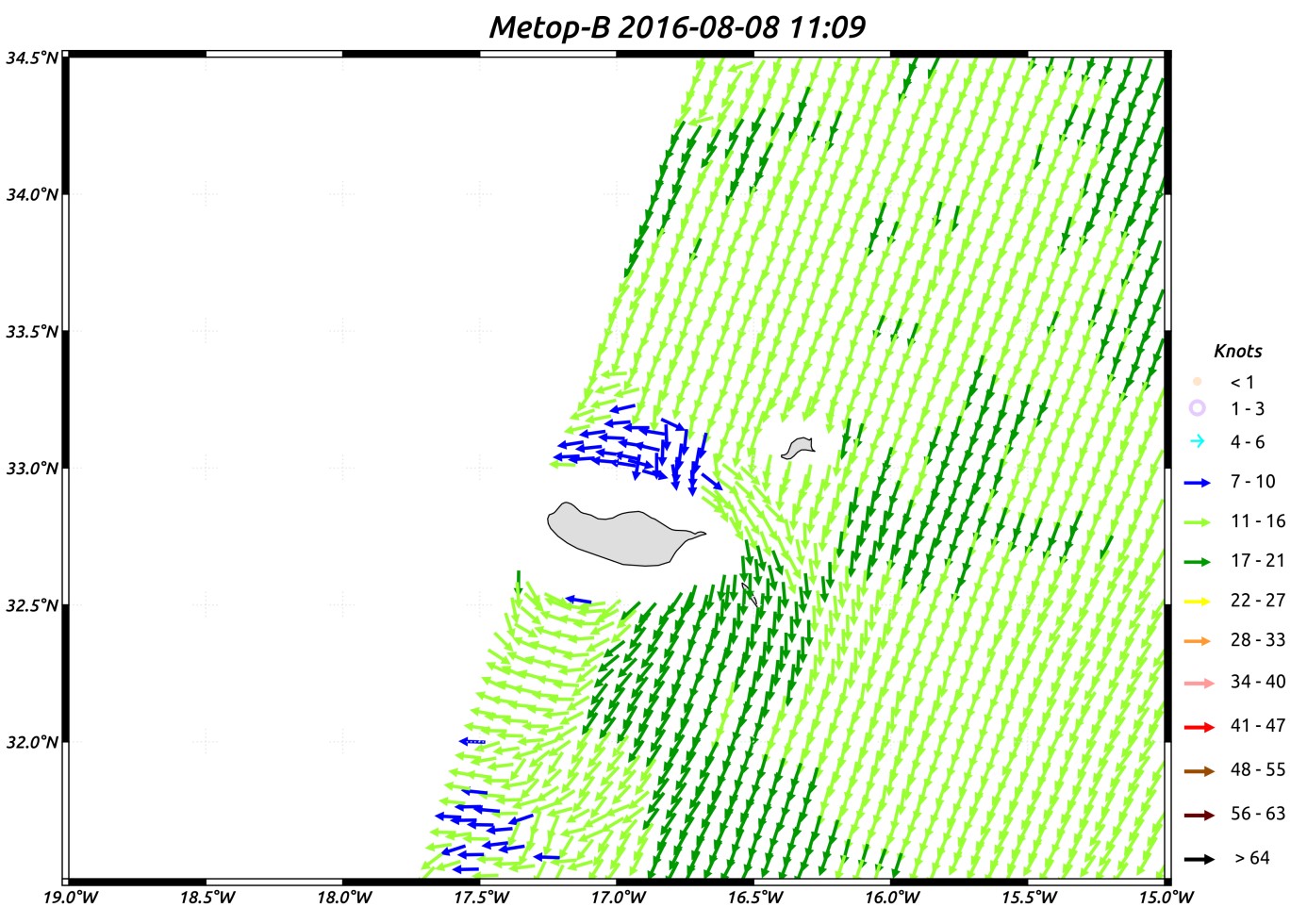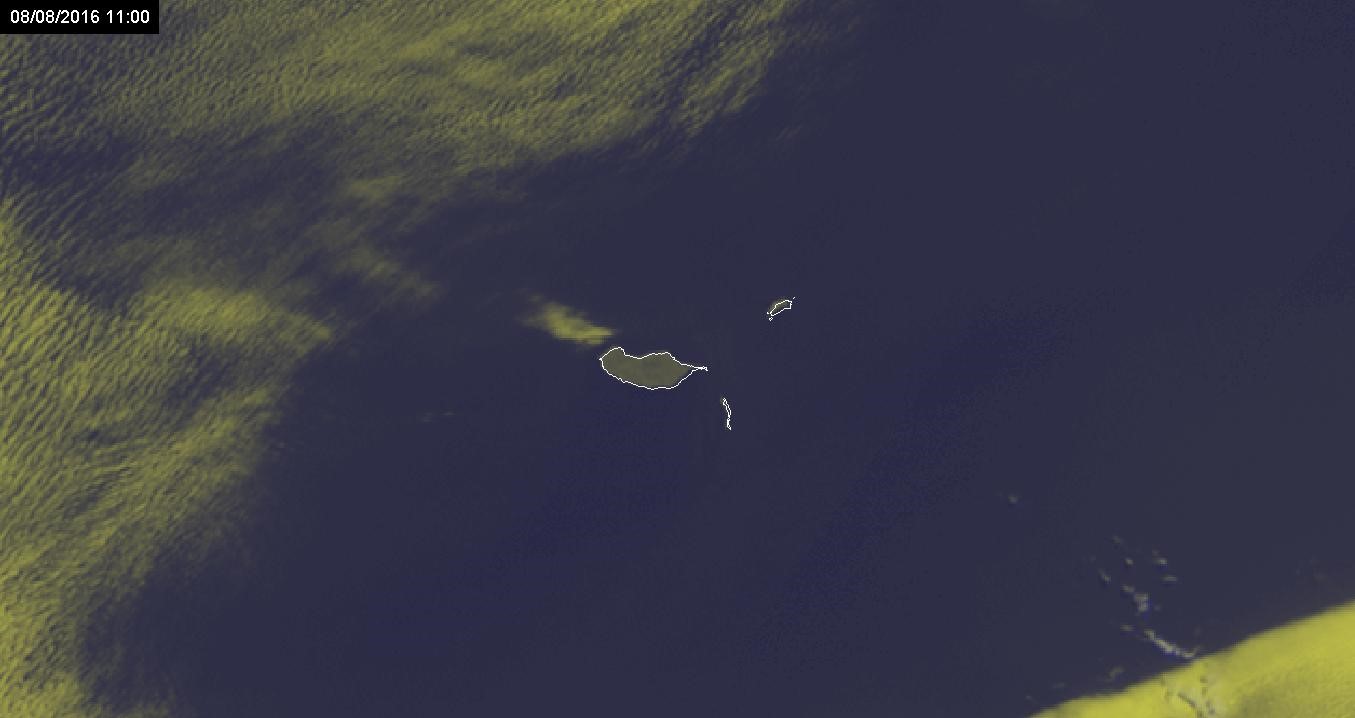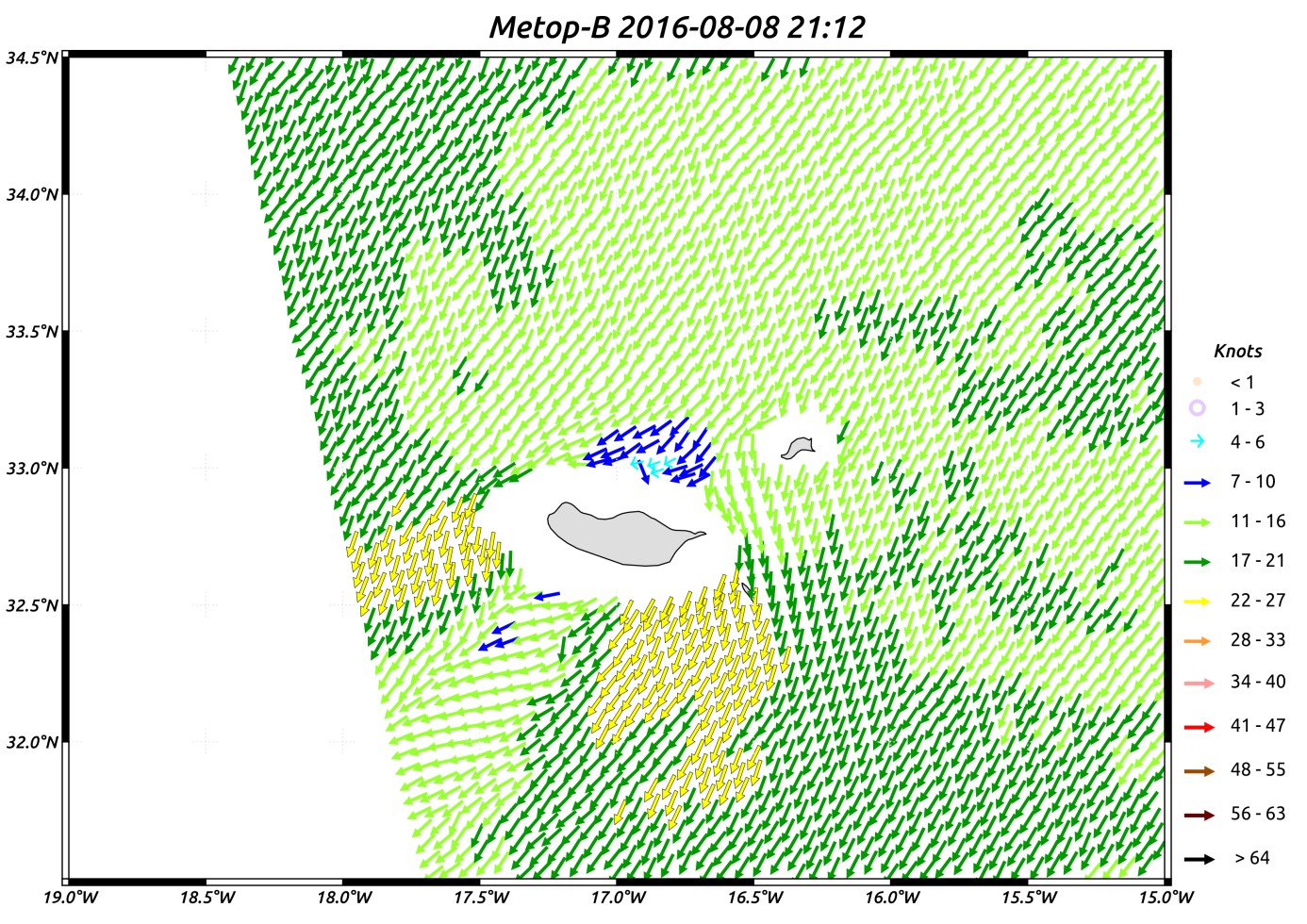ASCAT new 6.25 wind product
Space-borne scatterometers regularly provide a large number of measurements of near surface wind in places where conventional observations are scarce. Their wind speed and direction data are reported as the equivalent neutral-stability wind at 10 m height above the sea surface. In the inner coastal region, wind estimates from scatterometers are restrained by the distance to shore since backscatter measurements are strongly affected by the presence of land. Nevertheless, these products allow obtaining good quality data of winds over the sea surface as close as 15-20 km from the coast line (Verhoef et al., 2012).
Recently, an ASCAT scatterometer on a 6.25 km grid with a true spatial resolution of about 17 km has become available (Vogelzang et al., 2017). This product was developed by KNMI in the Netherlands in the framework of the Numerical Weather Prediction Satellite Application Facility (NWPSAF).
ASCAT-6.25 data were obtained using the full resolution ASCAT L1B product from EUMETSAT Earth Observation portal as input. ASCAT-6.25 product was generated employing ASCAT wind data processor (AWDP) version 2.4 (AWDP-2.4) and was generated with an aggregation radius of 7.5 km, which offers the best possible compromise between resolution and accuracy (Vogelzang et al., 2017). At present, the AWDP developed by NWPSAF allows deriving ocean vector winds on a 25 km, 12.5 km, or 6.25 km grid, but the latter is currently not distributed operationally and has to be generated individually by users.
In the ASCAT-A pass shown in fig. 4.1, the synoptic wind is from the north-east and downstream Madeira Island the change in wind field pattern is clear. Upstream the wind is less intense but there is no clear change in wind direction. At this time (11:18 UTC), the foehn-like conditions were not detected anymore at Funchal weather station. However, this ASCAT wind product is only valid 15-20 km from the coast line, so the upstream flow deceleration could still be present near the island.
Figure 4.1: ASCAT-A 6.25x6.25 wind product on 5 August at 11:18UTC.
Figure 4.2: HRV RGB on 5th August 2016 at 11:00UTC.
In the ASCAT-B pass on 8 August (fig. 4.3), the second event, the synoptic wind is from north/north-east and the changes in wind field direction and speed upstream of Madeira Island are clear. The area of light winds is consistent with a possible stagnant area associated with the blocking mechanism. It is also possible to see the flow going around the island.
Figure 4.3: ASCAT-B 6.25x6.25 wind product on 8 August at 11:09UTC.
Figure 4.4: HRV RGB on 8th August 2016 at 11:00UTC.
Later that day, in the ASCAT-B pass shown in fig. 4.5 at 21:12 UTC, the synoptic wind is from the north-east and the changes in wind field direction and speed upstream of Madeira Island are again clear. The area of light winds can be detected and the flow is going around the island.
Figure 4.5: ASCAT-B 6.25x6.25 wind product on 8 August at 21:12UTC
Figure 4.6: Night Microphysics RGB on 8th August at 21:00 UTC
